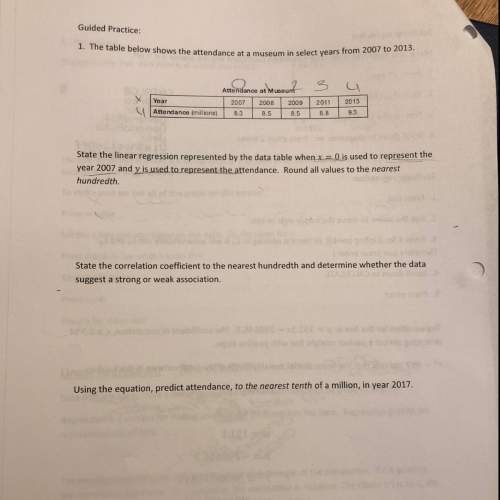
Mathematics, 25.01.2020 17:31 gomezjuana123
The amount of money in an account with continuously compounded interest is given by the formula a = pert, where p is the principal, r is the annual interest rate, and t is the time in years. calculate to the nearest tenth of a year how long it takes for an amount of money to double if interest is compounded continuously at 7.5%.

Answers: 2


Other questions on the subject: Mathematics

Mathematics, 22.06.2019 00:20, mya1318
Match the following reasons with the statements given to create the proof. 1. do = ob, ao = oc sas 2. doc = aob given 3. triangle cod congruent to triangle aob vertical angles are equal. 4. 1 = 2, ab = dc if two sides = and ||, then a parallelogram. 5. ab||dc if alternate interior angles =, then lines parallel. 6. abcd is a parallelogram cpcte
Answers: 2


Mathematics, 22.06.2019 03:40, cherylmorton7302
Anull hypothesis states that the difference between 8 hours of sleep and 3 hours of sleep has no effect on the number of pictures a student will remember during a picture memory interface test (pmit). examining the mit database, an extremely small t-value of 0.1611 is found. this t-value is much smaller than the smallest t-value on the chart for p-value reference. from this information we can: select one: a. accept the null hypothesis because the p-value obtained shows that the difference between the two groups being tested is not statistically significant b. accept the null hypothesis because the p-value obtained was statistically significant c. reject the null hypothesis because of the p-value obtained d. reject the null hypothesis because the data obtained is statistically significant
Answers: 3
You know the right answer?
The amount of money in an account with continuously compounded interest is given by the formula a =...
Questions in other subjects:

Mathematics, 11.12.2020 01:00

Mathematics, 11.12.2020 01:00


Chemistry, 11.12.2020 01:00


Mathematics, 11.12.2020 01:00


Arts, 11.12.2020 01:00











